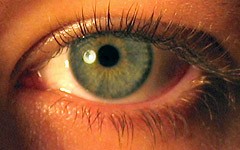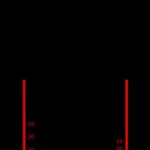The human eye and a camera share striking similarities in how they capture images. Both utilize a lens to focus light onto a surface – the retina in the eye and a sensor in the camera – forming a visual representation of the world. This fundamental parallel begs the question: why is the eye so often compared to a camera? This article delves into the fascinating parallels and key distinctions between these two intricate image-capturing systems.
Similarities: How the Eye and Camera Function
The comparison stems from the shared principles of light capture and image formation:
- Lens: Both the eye and a camera use a lens to refract light and focus it onto a light-sensitive surface. The lens in the eye adjusts its shape to focus on objects at varying distances, while camera lenses achieve this through mechanical adjustment.
- Aperture: The pupil in the eye functions much like the aperture in a camera, controlling the amount of light entering the system. In bright conditions, the pupil constricts to limit light intake, similar to a smaller aperture setting in a camera. Conversely, in dim light, the pupil dilates to allow more light in, mirroring a wider camera aperture.
- Light-Sensitive Surface: The retina in the eye and the sensor in a camera serve as the canvases upon which the focused light paints an image. Photoreceptor cells in the retina convert light into electrical signals, while camera sensors translate light into digital data.
Key Differences: Beyond the Basics
Despite these similarities, crucial differences exist in how the eye and a camera process visual information:
Angle of View
While a camera’s angle of view is fixed by its lens, the eye’s perception is far more complex. Each eye boasts a wide field of view, but only the central portion provides sharp detail. Our brain seamlessly stitches together information from both eyes, creating a 3D representation with a prioritized focus. A “normal” lens on a camera approximates this central vision, minimizing distortion.
Resolution and Detail
The eye’s resolution is often oversimplified. While the central vision boasts high acuity, peripheral vision drops off significantly. Our brain compensates by rapidly focusing on different areas, building a composite image prioritized by interest. This dynamic process contrasts with a camera’s static, uniform resolution. Furthermore, the eye excels at perceiving subtle tonal gradations, an area where cameras often struggle.
Sensitivity and Dynamic Range
The eye’s dynamic range – the ability to discern between the brightest and darkest areas – is remarkable. While a single camera image captures a fixed range, the eye constantly adapts to varying light levels. However, in a fixed setting, the eye’s instantaneous dynamic range is comparable to high-end cameras. Moreover, the eye’s sensitivity adjusts dramatically in low light, enabling us to see in near darkness, although long-exposure photography allows cameras to capture even fainter objects.
Conclusion: The Eye’s Complex Advantage
While a camera replicates fundamental aspects of vision, the eye’s intricate connection to the brain enables unparalleled dynamic adaptation and intelligent image processing. The eye doesn’t just record; it interprets, prioritizes, and constructs our visual reality. Cameras, however advanced, still capture a static moment in time. The magic of human vision lies in the constant interplay between the eye and the brain, creating a rich and dynamic visual experience. Understanding these differences allows photographers to better appreciate the nuances of visual perception and strive to capture more compelling and impactful images. For further reading, explore topics like false color perception and Mach bands to delve deeper into the complexities of the human visual system.


